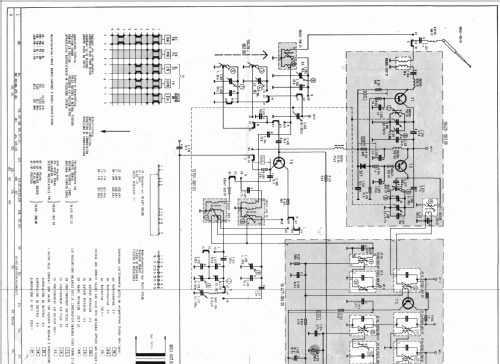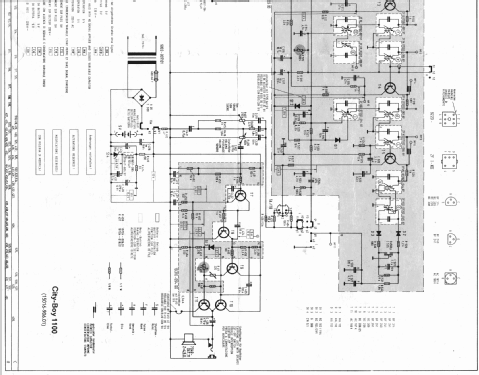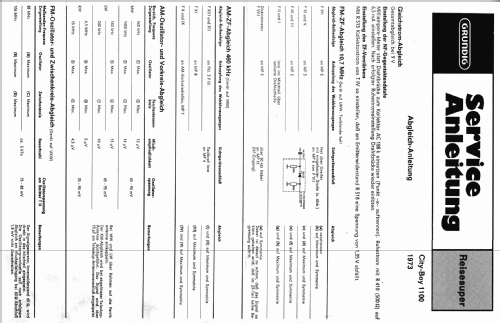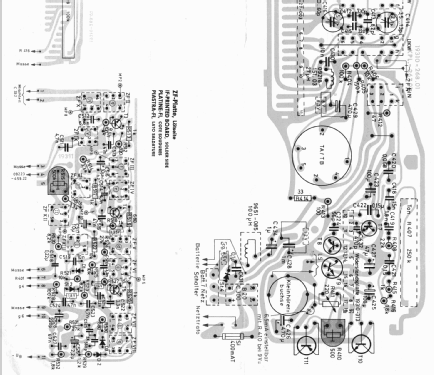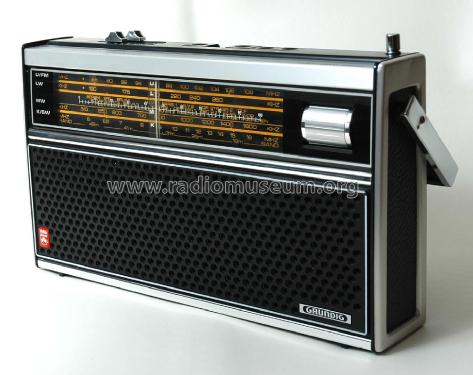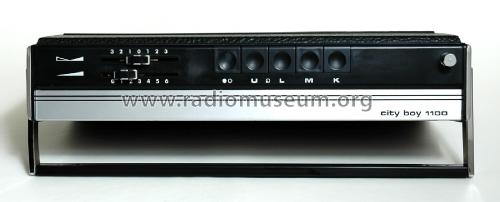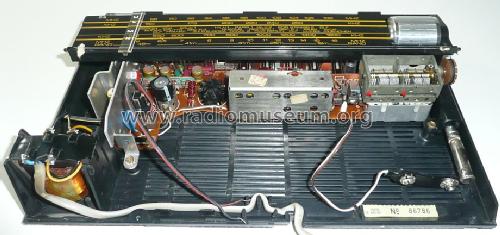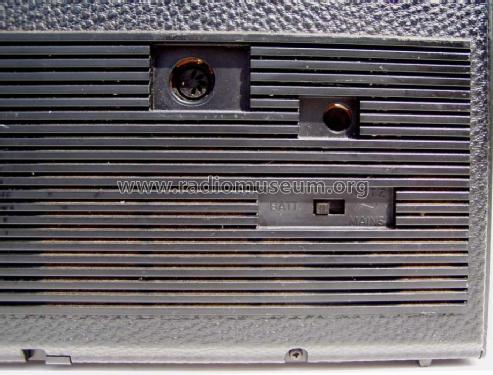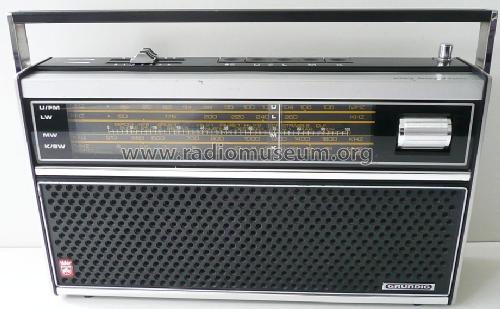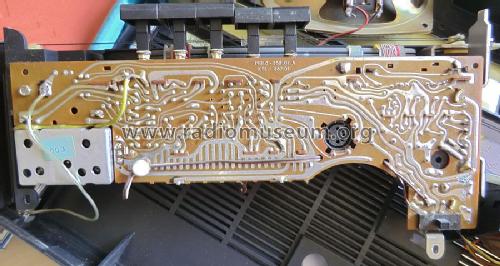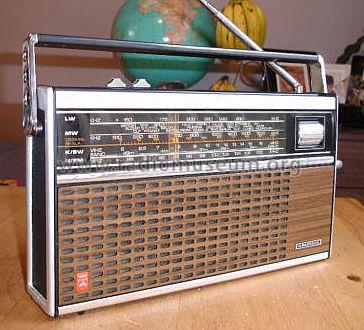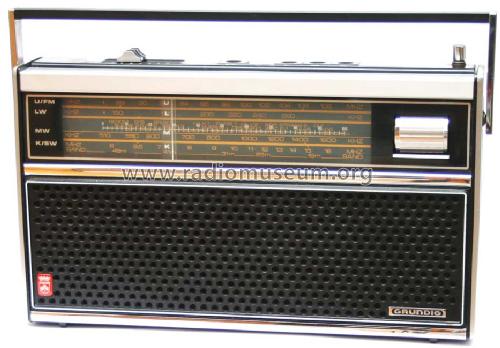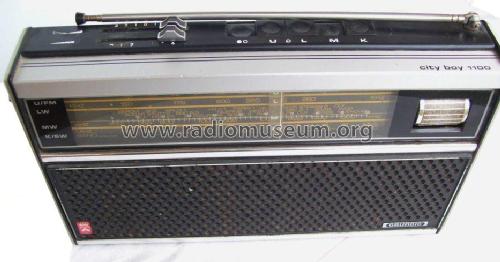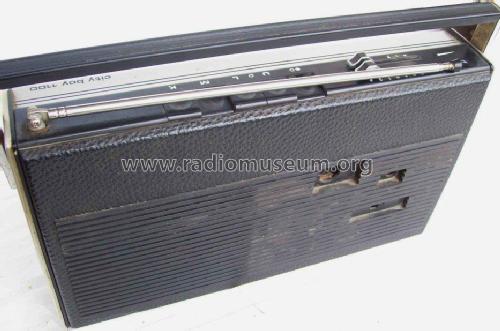City-Boy 1100
Grundig (Radio-Vertrieb, RVF, Radiowerke); Fürth/Bayern
- Paese
- Germania
- Produttore / Marca
- Grundig (Radio-Vertrieb, RVF, Radiowerke); Fürth/Bayern
- Anno
- 1973–1976
- Categoria
- Radio (o sintonizzatore del dopoguerra WW2)
- Radiomuseum.org ID
- 29232
-
- alternative name: Grundig Portugal || Grundig USA / Lextronix
Clicca sulla miniatura dello schema per richiederlo come documento gratuito.
- Numero di transistor
- 11
- Semiconduttori
- Principio generale
- Supereterodina (in generale); ZF/IF 460/10700 kHz
- N. di circuiti accordati
- 7 Circuiti Mod. Amp. (AM) 10 Circuiti Mod. Freq. (FM)
- Gamme d'onda
- Onde medie (OM), lunghe (OL), corte (OC) e MF (FM).
- Tensioni di funzionamento
- Rete / Batterie (ogni tipo) / 110-230 / 2×4,5; 9 Volt
- Altoparlante
- AP magnetodinamico ellittico (magnete permanente e bobina mobile).
- Potenza d'uscita
- 2 W (qualità ignota)
- Materiali
- Plastica (non bachelite o catalina)
- Radiomuseum.org
- Modello: City-Boy 1100 - Grundig Radio-Vertrieb, RVF,
- Forma
- Apparecchio portatile > 20 cm (senza la necessità di una rete)
- Dimensioni (LxAxP)
- 330 x 190 x 70 mm / 13 x 7.5 x 2.8 inch
- Annotazioni
- NF-Ausgangsleistung bei Netzbetrieb = 3 W.
- Peso netto
- 2.2 kg / 4 lb 13.5 oz (4.846 lb)
- Fonte esterna dei dati
- Erb
- Fonte dei dati
- Katalog RFP 1973
- Bibliografia
- Handbuch VDRG 1974/1975 (und1975/76)
- Altri modelli
-
In questo link sono elencati 6213 modelli, di cui 5446 con immagini e 4211 con schemi.
Elenco delle radio e altri apparecchi della Grundig (Radio-Vertrieb, RVF, Radiowerke); Fürth/Bayern
Collezioni
Il modello City-Boy fa parte delle collezioni dei seguenti membri.
Discussioni nel forum su questo modello: Grundig Radio-: City-Boy 1100
Argomenti: 1 | Articoli: 1
Das Gerät hat ein abgeschnittenes Netzkabel, als es zu mir kommt. Das deutet auf einen Fehler mindestens im Netzteil hin. Ich speise es via den Batterieanschluss von einem externen Netzgerät aus. Es läuft sofort, fällt aber ganz schnell aus. Wenn man es neu einschaltet, läuft es jedes Mal wieder an, wenn auch oftmals nur für Sekunden. Innerhalb des Gerätes fallen dann die Spannungen, die Stromaufnahme steigt rapide an.
Netzteil schadhaft? Kondensatoren, die durchschlagen? Endverstärker beschädigt? Transistoren denen Hitze zu schaffen macht? Bei 5 Volt läuft das Radio ziemlich stabil, aber zieht vom Netzgerät nach Lust und Laune zwischen 0,03 A und 0.5 A. Wird die Spannung erhöht, bleibt es manchmal bei 0.03 A, und alles geht gut, ja, bis dann plötzlich die Stromaufnahme nach oben schiesst...
Wo steckt der Fehler? - Wo ich ihn bei einem ähnlichen Gerät von Grundig schon einmal gefunden habe. Auf der Hauptplatine aufgesteckt und im Winkel von 90 Grad festgelötet befinden sich ein paar Kleinstplatinen. Beim Lötbad wird die Lötung wohl recht fein. In diesem Fall handelt es sich um ein Kleinstplatinchen von den allerbescheidensten Abmessungen: die Widerstandsplatte. Die Anschlüsse 8, 9, 17 und 18 nachgelötet und der Spuk ist verschwunden...
Bruce Cohen, 13.Mar.15
